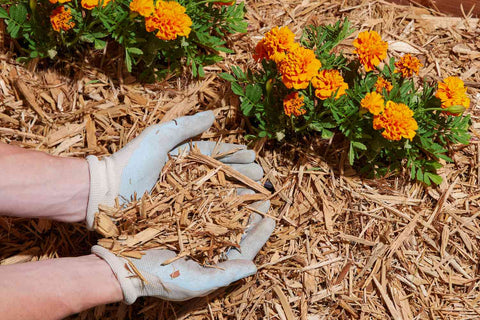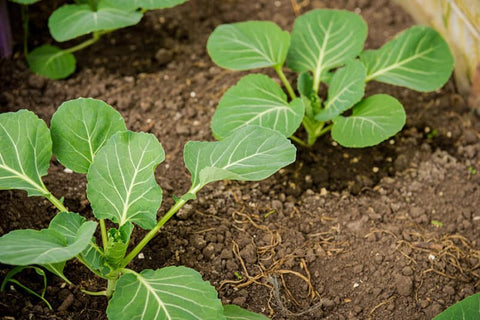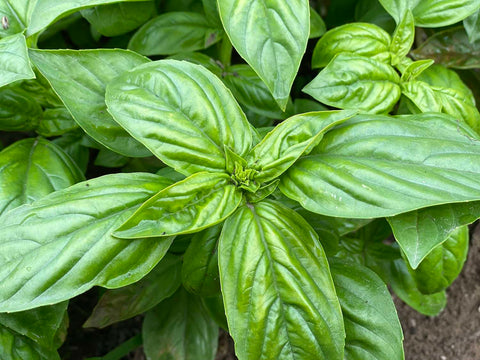Introduction
Container gardening has become increasingly popular for its versatility and accessibility, offering a rewarding gardening experience even in limited spaces. In this comprehensive guide, we will explore the world of container gardening, covering everything from choosing containers and selecting plants to proper maintenance and creative ideas to elevate your container garden.The following content also has some reference value for raised garden beds.

Choosing Containers
Types of Containers
There is a wide array of containers available for your container garden, ranging from traditional pots and planters to repurposed items and unconventional materials. Terracotta pots, plastic containers, wooden planters, hanging baskets, and recycled objects like tires or barrels are just a few options to consider.
Factors to Consider
When selecting containers for your garden, it's essential to consider factors such as size, material, drainage, and aesthetics. Choose containers that complement your garden style and provide adequate space for plant roots to grow and thrive.
Creative Container Ideas
Get creative with your container choices by thinking outside the box. Repurpose old items like teapots, boots, or even wheelbarrows into unique planters that add character and charm to your garden space. Upcycling and repurposing containers not only reduce waste but also inject personality and creativity into your gardening endeavors.
Selecting Plants for Containers
Best Plants for Container Gardening
Container gardening opens up a world of possibilities when it comes to plant selection. From colorful annual flowers and aromatic herbs to compact vegetables and dwarf fruit trees, there's a wide variety of plants that thrive in containers. Choose plants that suit your climate, sunlight conditions, and gardening goals to create a diverse and visually appealing container garden.
Considerations for Plant Selection
When selecting plants for your containers, consider factors such as mature size, growth habits, and compatibility with other plants. Opt for compact or dwarf varieties of larger plants to ensure they fit well in your containers and won't outgrow their space. Pay attention to the plant's sunlight, water, and soil requirements to provide optimal growing conditions.
Matching Plants to Container Size
Match the size of your plants to the size of your containers to create balanced and harmonious arrangements. Choose small or trailing plants for small containers and larger or upright plants for larger containers. Consider planting a mix of plants with varying heights, textures, and colors to create visual interest and depth in your container garden.
Soil and Potting Mixes
Importance of Soil Quality
The quality of the soil is crucial for the health and growth of container plants. Opt for a well-draining potting mix specifically formulated for container gardening, as it provides the necessary nutrients and aeration for healthy root development. Avoid using garden soil, as it may become compacted and hinder drainage and root growth.

Types of Potting Mixes
There are various types of potting mixes available, each tailored to specific plant needs and growing conditions. Standard potting mixes are suitable for most container plants, while specialized mixes such as cactus mix or orchid mix cater to the unique requirements of certain plants. Consider the water retention, aeration, and nutrient content of the potting mix when making your selection.
DIY Potting Mix Recipes
For the more adventurous gardener, consider making your own potting mix using a combination of ingredients such as peat moss, perlite, vermiculite, compost, and organic matter. DIY potting mixes allow you to customize the blend to suit your plant's specific needs and can be a cost-effective and sustainable option for container gardening.
Container Placement and Sunlight
Understanding Sunlight Requirements
Proper sunlight exposure is essential for the health and vitality of container plants. Most plants require a minimum of six hours of direct sunlight per day to thrive, while some may prefer partial shade or filtered sunlight. Observe the sunlight patterns in your garden space and position your containers accordingly to ensure your plants receive the appropriate amount of sunlight.
Tips for Proper Container Placement
When placing your containers, consider factors such as orientation, proximity to structures, and exposure to wind and elements. Position containers in areas with good air circulation and avoid placing them too close together, as this can lead to overcrowding and poor airflow. Rotate containers periodically to ensure all sides receive adequate sunlight and prevent uneven growth.
Dealing with Shade and Sun-Loving Plants
If your garden space has limited sunlight or is shaded by nearby buildings or trees, don't despair. There are plenty of shade-loving plants that thrive in low-light conditions, such as ferns, hostas, and impatiens. Alternatively, consider growing sun-loving plants in containers and moving them to sunnier spots or using reflective surfaces to maximize sunlight exposure.
Watering Techniques
Importance of Proper Watering
Proper watering is crucial for the health and success of container plants, as they rely solely on the gardener for their water supply. Underwatering can lead to dehydration and wilting, while overwatering can cause root rot and fungal diseases. Finding the right balance and mastering proper watering techniques is essential for maintaining healthy container plants.
Watering Frequency and Methods
The frequency of watering depends on factors such as plant species, container size, weather conditions, and soil composition. Water containers thoroughly until water drains out of the bottom, ensuring that the entire root ball is moistened. Use a watering can, hose, or drip irrigation system to deliver water directly to the root zone and avoid wetting the foliage, which can promote fungal diseases.
Signs of Overwatering and Underwatering
Pay attention to signs of overwatering, such as yellowing leaves, wilting, and soggy soil, as well as signs of underwatering, such as dry, crispy leaves and soil pulling away from the container edges. Adjust your watering schedule accordingly and consider factors such as temperature, humidity, and plant growth stage when determining water needs.
Fertilizing Container Plants
Nutrient Needs of Container Plants
Container plants have limited access to nutrients compared to those grown in the ground, as nutrients leach out of the soil more quickly in containers. Regular fertilization is essential to replenish soil nutrients and promote healthy growth. Choose a balanced, water-soluble fertilizer specifically formulated for container plants and apply it according to the manufacturer's instructions.
Types of Fertilizers for Container Gardening
There are various types of fertilizers available for container gardening, including granular, liquid, and slow-release formulations. Granular fertilizers are easy to apply and provide long-lasting nutrients, while liquid fertilizers are quickly absorbed by plants for rapid growth. Slow-release fertilizers release nutrients gradually over time, reducing the need for frequent applications and minimizing the risk of fertilizer burn.
Fertilizing Schedule and Application Tips
Establish a regular fertilizing schedule based on the needs of your plants and the type of fertilizer used. Apply fertilizer when plants are actively growing, typically during the spring and summer months, and reduce or suspend fertilization during the fall and winter when plant growth slows. Avoid overfertilizing, as it can lead to nutrient imbalances and potentially harm your plants. Water plants thoroughly after fertilizing to ensure nutrients are distributed evenly throughout the soil.
Container Garden Maintenance
Pruning and Deadheading Container Plants
Regular pruning and deadheading are essential maintenance tasks to keep your container garden looking its best. Remove dead or diseased foliage, spent flowers, and leggy stems to promote new growth and encourage flowering. Pruning also helps maintain plant shape and size, preventing overcrowding and improving air circulation.
Pest and Disease Management
Monitor your container plants regularly for signs of pests, diseases, or nutrient deficiencies. Common pests such as aphids, spider mites, and whiteflies can wreak havoc on container plants, while fungal diseases like powdery mildew and root rot can quickly spread and cause significant damage. Use organic pest control methods such as neem oil, insecticidal soap, or beneficial insects to manage pest infestations and prevent damage to your plants.
Cleaning and Maintaining Containers
Clean containers periodically to remove algae, mold, or mineral deposits that can accumulate on the surface. Scrub containers with a mixture of water and mild dish soap, rinse thoroughly and allow them to dry completely before replanting. Sanitize containers with a diluted bleach solution to disinfect them and prevent the spread of pests and diseases. Additionally, inspect containers for cracks, damage, or signs of wear and tear, and repair or replace them as needed to ensure optimal plant health and longevity.
Seasonal Considerations
Spring Container Gardening Tips
In the spring, prepare containers for planting by cleaning and sterilizing them to remove any overwintering pests or diseases. Refresh potting soil and replenish nutrients with a slow-release fertilizer to prepare containers for new plantings. Start seeds indoors or purchase transplants from nurseries and garden centers to jump-start your spring container garden with colorful flowers, fresh herbs, and vibrant vegetables.
Summer Container Care
During the hot summer months, container plants may require more frequent watering to prevent heat stress and dehydration. Water early in the morning or late in the afternoon to minimize water loss through evaporation and reduce the risk of fungal diseases. Provide shade or shelter for container plants during the hottest part of the day, and use mulch to conserve soil moisture and regulate temperature.
Fall and Winter Container Maintenance
As temperatures cool in the fall, transition cold-sensitive plants indoors or provide frost protection to extend the growing season. Bring tender plants indoors before the first frost, or cover them with frost blankets or row covers to protect them from freezing temperatures. Reduce watering frequency as plant growth slows and temperatures drop, and prepare containers for winter by insulating them with bubble wrap or moving them to sheltered locations.
Vertical Gardening in Containers
Utilizing Vertical Space for Container Gardening
Vertical gardening is an excellent way to maximize space and add vertical interest to your container garden. Utilize trellises, arbors, or hanging baskets to grow climbing plants such as tomatoes, cucumbers, or pole beans vertically. Vertical gardening not only conserves space but also allows for better air circulation and sunlight exposure, promoting healthier plant growth and higher yields.
Types of Vertical Containers
There are various types of vertical containers available for container gardening, including wall-mounted planters, hanging pockets, and living walls. Choose vertical containers that suit your space constraints, aesthetic preferences, and plant selection. Consider factors such as weight capacity, drainage, and ease of installation when selecting vertical containers for your garden.
Plant Selection and Care for Vertical Gardens
Select plants that are well-suited for vertical gardening and can thrive in the confined space of a vertical container. Choose compact or trailing varieties of plants such as strawberries, herbs, or succulents that won't outgrow their vertical space. Provide adequate support for climbing plants and regularly prune or train them to prevent overcrowding and maintain plant health and aesthetics.
Specialized Container Gardening
Herb Container Gardens
Herb container gardens are a popular choice for container gardening enthusiasts, offering fresh herbs for culinary use and aromatic foliage for sensory pleasure. Choose a variety of herbs such as basil, rosemary, thyme, and parsley to create a diverse and functional herb garden. Plant herbs in individual containers or combine them in larger containers to create themed herb gardens based on culinary themes or flavor profiles.
Vegetable Container Gardening
Vegetable container gardening allows urban dwellers and gardeners with limited space to grow their own fresh produce at home. Choose compact or dwarf varieties of vegetables such as tomatoes, peppers, lettuce, and carrots that are well-suited for container cultivation. Provide adequate sunlight, water, and nutrients to promote healthy growth and abundant harvests from your vegetable container garden.
Flower and Ornamental Container Displays
Create stunning flower and ornamental container displays to add color, texture, and visual interest to your garden space. Choose a mix of annuals, perennials, and flowering shrubs with varying heights, colors, and bloom times to create dynamic and eye-catching container arrangements. Consider seasonal themes, color schemes, and plant combinations to design container displays that reflect your personal style and gardening preferences.
Creative Container Gardening Ideas
Unique Container Materials
Get creative with your container choices by using unconventional materials such as recycled tires, vintage crates, or salvaged objects. Transform everyday items into unique planters that add personality and character to your container garden. Explore flea markets, thrift stores, and garage sales for one-of-a-kind containers that inspire creativity and showcase your individuality as a gardener.
Upcycling and Repurposing Containers
Reduce waste and showcase your creativity by upcycling and repurposing containers for your garden. Turn old boots, teapots, or even kitchen colanders into whimsical planters that add a touch of whimsy to your outdoor space. Experiment with repurposing materials such as pallets, wine barrels, or shipping crates into functional and stylish containers that elevate your container gardening game.
Tips for Designing Eye-Catching Container Arrangements
Designing visually appealing container arrangements is both an art and a science, requiring careful consideration of color, texture, form, and scale. Start by selecting a focal point plant or centerpiece and build around it with complementary or contrasting plants. Play with height and proportion by incorporating tall, medium, and trailing plants to create depth and dimension in your container arrangements. Experiment with color combinations, foliage textures, and seasonal accents to create container displays that captivate the eye and delight the senses.

Conclusion
Container gardening offers endless possibilities for gardeners of all skill levels to cultivate beautiful and bountiful gardens in any space. By choosing the right containers, selecting suitable plants, and mastering essential gardening techniques, you can create a thriving container garden that brings joy and beauty to your outdoor oasis. Whether you're a seasoned gardener or a novice enthusiast, experimenting with different container gardening ideas and techniques is sure to enhance your gardening experience and foster healthy growth in your garden. So roll up your sleeves, grab your gardening gloves, and let your creativity bloom with container gardening!









